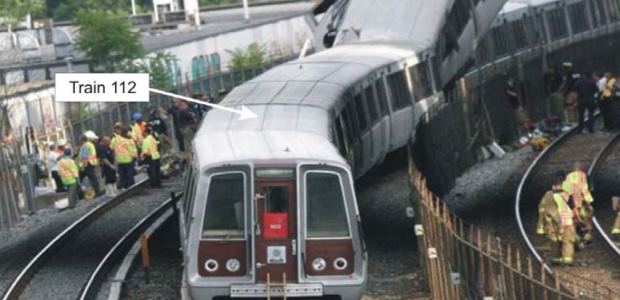
NTSB's Chair: Be Aware of Automation's Shortcomings
One example he cites is a 2009 collision of a WMATA train with a train stopped near the Fort Totten station. The safety board determined it resulted from a failure of the track circuit modules that caused the automatic train control system to lose detection of the stopped train.
An interesting Aug. 8 blog post by Christopher Hart, who chairs the National Transportation Safety Board, discusses the potential of driverless vehicles and automation to make U.S. transportation safer. Automation alone is not foolproof, Hart stresses, and he cites as an example a 2009 collision of a WMATA train with a train stopped near the Fort Totten station. The safety board determined the crash resulted from a failure of the track circuit modules that caused the automatic train control system to lose detection of the stopped train, and it also faulted WMATA's lack of a safety culture.
Hart, who wrote that the post is based on a speech he gave in June 2016 at the National Press Club, notes that technological advances have made motor vehicles much safer in recent decades – seat belts, air bags, and structural crush resistance "have undoubtedly saved thousands of lives a year," he writes. "Now we have the exciting opportunity to use technological advances to prevent crashes from happening in the first place, which can save tens of thousands of lives a year. But because automation will coexist with human drivers for the foreseeable future, there will be many challenges. Driverless cars could save many, if not most, of the 33,000 lives that are lost every year on our streets and highways – a very tragic and unacceptable number that has been decreasing for several years but has recently taken a turn in the wrong direction.
"Most crashes on our roads are due to driver error. The theory of driverless cars is that if there is no driver, there will be no driver error. Ideally, removing the driver would address at least four issues on the NTSB's Most Wanted List of Transportation Safety Improvements – fatigue, distractions, impairment, and fitness for duty. The automation in driverless cars would presumably also address a fifth item on our list, namely, improved collision avoidance technologies," he continues. "Decades of experience in a variety of contexts has demonstrated that automation can improve safety, reliability, productivity, and efficiency. That experience has also demonstrated that there can be a downside. As noted by Professor James Reason, who is a world-renowned expert in complex human-centric systems: In their efforts to compensate for the unreliability of human performance, the designers of automated control systems have unwittingly created opportunities for new error types that can be even more serious than those they were seeking to avoid."
Hart writes that NTSB's investigations provide three lessons learned that support Reason's statement. One is that the theory of removing human error by removing the human assumes that the automation is working as designed. Another is that, even if the operator is removed from the loop, humans are still involved in designing, manufacturing, and maintaining vehicles and the streets and highways they use , so at each point there are opportunities for human error.
"The most fundamental lesson learned from our accident investigation experience in support of Prof. Reason's statement is that introducing automation into complex human-centric systems can be very challenging. Most of the systems we have investigated are becoming increasingly automated but are not fully automated. As a result, we have seen that the challenges can be even more difficult in a system that is not completely automated but still has substantial human operator involvement," he writes.
Hart then discusses how NTSB can help to inform the process of moving toward driverless cars.